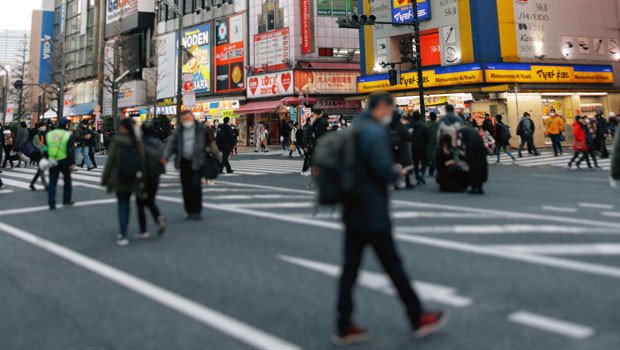Asia report: Japanese crash leads big slide for region's markets

Asia-Pacific markets experienced a significant downturn on Monday, led by a crash in Japan's stock indices.
The benchmark Nikkei 225 recorded its steepest single-day loss since the 1987 Black Monday crash, with the broader Topix also recording a more-than-12% retreat.
“Following the massive sell-off in global markets on Friday, Asian stock markets are a sea of red on Monday as traders react to weak monthly jobs data from the United States and recent weak manufacturing activity data from the US that fueled fears that the largest economy in the world may enter a recession,” said TickMill market analyst Patrick Munnelly.
“The US Fed appears to have waited too long to cut interest rates.
“Investors are expecting that a worldwide version of the Fed put will come to the rescue through central banks.”
Munnelly noted that according to futures, there was a 73% likelihood that the Fed would reduce rates by 50 basis points in September and 115 basis points overall by Christmas.
“By the end of the following year, rates will be close to 3%.”
Markets crumble across the Asia-Pacific region
In Japan, the Nikkei 225 plunged 12.4%, confirming a bear market as it fell more than 20% from its 11 July peak, closing at 31,458.42, while the broader Topix index also saw a sharp decline, dropping 12.23% to 2,227.15.
This dramatic sell-off erased all of the Nikkei's gains for the year, putting it in a loss position.
Other markets in the region followed suit, though with less dramatic declines.
China's Shanghai Composite fell by 1.54% to 2,860.70, while the Shenzhen Component dropped 1.85% to 8,395.05.
Major Chinese stocks like Guangzhou Fangbang Electronics and KraussMaffei saw double-digit losses of over 10%.
In Hong Kong, the Hang Seng Index dipped 1.46% to 16,698.36, with leading stocks such as CNOOC and HSBC Holdings dropping by more than 5%.
South Korea's Kospi index suffered a significant 8.77% loss, closing at 2,441.55.
Leading decliners included L&F, Kumyang, and HD Korea Shipbuilding, all posting losses exceeding 14%.
Australia’s S&P/ASX 200 fell 3.7% to 7,649.60, with Clarity Pharmaceuticals dropping 12.88%.
New Zealand's S&P/NZX 50 also edged lower by 1.51%, closing at 12,264.49, as major stocks like ANZ Group Holdings and Air New Zealand fell over 5%.
In currency markets, the dollar was last 3.08% weaker on the yen to trade at JPY 142.02.
The greenback did, however, gain against its Aussie and Kiwi counterparts, rising 0.91% on the former to AUD 1.5498, and advancing 0.45% against the latter to change hands at NZD 1.6859.
Oil prices declined, with Brent crude futures last down 2.12% on ICE at $75.18 per barrel, and the NYMEX quote for West Texas Intermediate dropping 2.34% to $71.80.
China’s service sector shows strength, RBA kicks off policy meeting
On economic news, China's service sector showed stronger growth in July, with the purchasing managers' index (PMI) rising to 52.1 from 51.2 in June, indicating an accelerated pace of expansion.
According to the Caixin survey, the growth was driven by an increase in new business, reflecting improved demand conditions and a broader range of services offered.
In Australia, the Reserve Bank started its two-day monetary policy meeting, with economists widely expecting the central bank to maintain interest rates at 4.35%.
However, attention would be focused on the accompanying monetary policy statement for any hints on whether the RBA could still consider a future rate hike.
Reporting by Josh White for Sharecast.com.